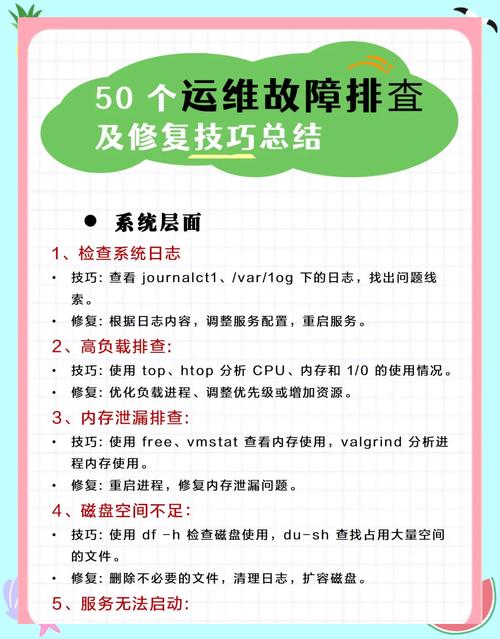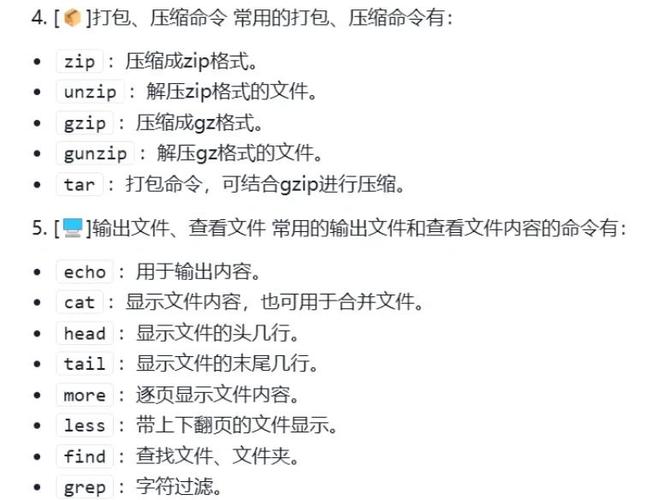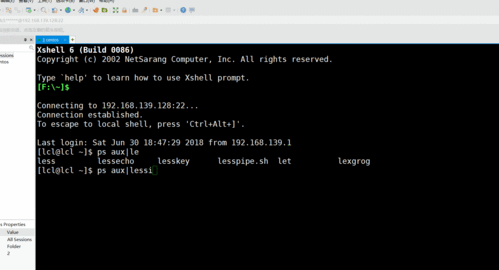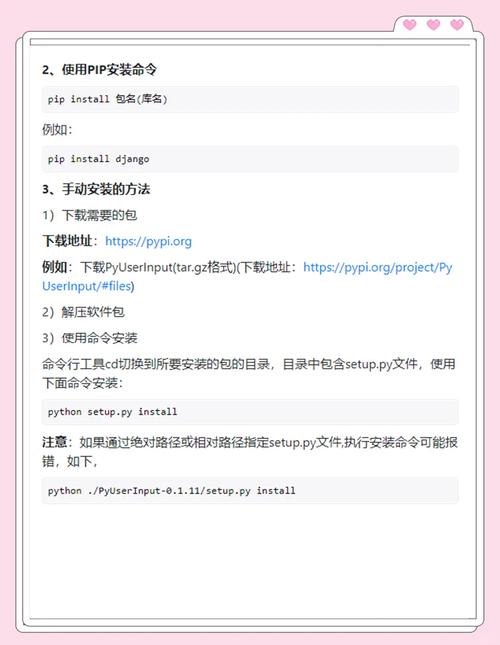Springboot 多模块项目结构(子父工程结构)搭建
引言
使用多模块项目结构在Spring Boot中具有显著的优势,特别是在大型项目中,能够显著提高开发效率和代码管理的灵活性。通过模块化开发、统一依赖管理、代码复用、构建优化以及独立部署和版本控制,多模块结构为项目的开发和维护提供了强有力的支持(主要是想在之前的兔子系统里面加一个即时通讯的功能,然后发现很多模块加在一起会很乱,就想着这样改造了)。
一、项目搭建(后端)
1、创建项目
New Project。
直接下一步,具体需要的依赖可以之后在 pom 文件中添加。
这就是刚建好的项目结构,可能有人会问为什么我这里这么这么简洁,可以给大家看一下怎么设置的(右键设置,然后选择想要显示哪些,怎么显示,这里仅供参考):
删除父工程下面的 src 文件。
2、修改父 pom.xml 文件
这里提供我的作为参考(注释加的很详细了,如果你们在这一步有点小问题,可以暂时忽略,因为我在下面提供了完整能跑的 pom,但是应该是没问题的):
org.springframework.boot
spring-boot-starter-parent
2.6.13
4.0.0
com.zero-ecological-chain
zero-ecological-chain
1.0.0
零式生态链
一个简易的生态链系统
pom
11
UTF-8
UTF-8
aliyunmaven
阿里云公共仓库
https://maven.aliyun.com/repository/public
org.springframework.boot
spring-boot-starter
org.springframework.boot
spring-boot-starter-jdbc
org.mybatis.spring.boot
mybatis-spring-boot-starter
2.2.2
com.oracle.database.jdbc
ojdbc11
23.3.0.23.09
org.projectlombok
lombok
true
org.apache.commons
commons-lang3
3.12.0
log4j
log4j
1.2.16
3、创建子工程 zec-api
这个子工程是用来对外提供接口的模块,进行前后端交互或其他服务的请求。
右击项目,选择 New --> Module。
填写子工程信息,点击 Next。
直接点 Create。
创建成功之后,修改子父工程的 pom 文件,把他们关联起来。
4、创建子工程 zec-system-management
这个子工程是系统管理模块,这个这一步就跟上面的一样,就不重复展示了。
test 文件没用,可以删掉,再把子工程 zec-system-management 的启动类删除,目前的项目结构就是这样了。
5、创建项目基本结构
创建每个子工程模块对应的功能包。
这里面的 yml 配置文件我放在下面给大家参考一下:
## 指定web容器访问端口号
rabbit:
name: 零式生态链
version: v-1.0.0
## web容器端口号
server:
port: 8088
## 配置数据库连接
spring:
servlet:
multipart:
max-file-size: 40MB
max-request-size: 40MB
## 设置单个文件上传的最大内存
datasource:
driver-class-name: oracle.jdbc.OracleDriver
url: jdbc:oracle:thin:@//localhost:1521/ORCL
username: 用户名
password: 密码
## 配置mybatis中mapper.xml文件扫描
mybatis:
type-aliases-package: com.*.pojo.sel.*
mapper-locations: classpath:mapper/*.xml # mapper.xml文件映射
6、连接数据库
使用最右边的 Database 连接 Oracle 数据库。
输入连接信息。
输入完成后,点击下面的 TestConnection,测试是是否正常连接,如果出现这样的就表示成功了,点击 Apply。
然后在 IDEA 右侧就能看到数据库信息了。
7、数据库创建表
建一个测试用的用户表,测试数据可以自己加上。
-- 用户表 CREATE TABLE zero_ecological_chain.CUSTOMER ( ID VARCHAR2(32) NOT NULL, ACCOUNT VARCHAR2(9) NOT NULL, NICK_NAME VARCHAR2(32) NOT NULL, BIRTHDAY Date, SEX VARCHAR(1), CREATE_TIME Date DEFAULT SYSDATE NOT NULL, UPDATE_TIME Date DEFAULT SYSDATE NOT NULL, IS_DELETE varchar(1) DEFAULT 'N' NOT NULL );
建好之后,在 idea 右侧点一下刷新,就能看到刚才建好的表。
8、生成实体类
利用 idea 自带的功能,可以自动生成实体类。
右击刚才看到的表。
选择实体类生成的位置,点击 OK。
生成好之后对实体类做一些改造,使用 @Data 注解替换原本的 getter、setter 方法。
9、开始写代码
我这里是都写好了,给大家看一下完整的能跑的项目结构。
代码我从上到下依次展示:
子工程 zec-api
AjaxResult
工具类,用于向前端发送 RESTful API 风格的数据。
package com.zecApi.utils;
import java.util.HashMap;
/**
* 操作消息提醒
*/
public class AjaxResult extends HashMap {
private static final long serialVersionUID = 1L;
/**
* 状态码
*/
public static final String CODE_TAG = "code";
/**
* 返回内容
*/
public static final String MSG_TAG = "msg";
/**
* 数据对象
*/
public static final String DATA_TAG = "data";
/**
* 数据总数量
*/
public static final String DATA_COUNT = "count";
/**
* 状态类型
*/
public enum Type {
/**
* 成功
*/
SUCCESS(200),
/**
* 警告
*/
WARN(301),
/**
* 校验失败
*/
FAILED(-1),
/**
* 错误
*/
ERROR(500);
private final int value;
Type(int value) {
this.value = value;
}
public int value() {
return this.value;
}
}
/**
* 初始化一个新创建的 AjaxResult 对象,使其表示一个空消息。
*/
public AjaxResult() {
}
/**
* 初始化一个新创建的 AjaxResult 对象
*
* @param type 状态类型
* @param msg 返回内容
*/
public AjaxResult(Type type, String msg) {
super.put(CODE_TAG, type.value);
super.put(MSG_TAG, msg);
}
/**
* 初始化一个新创建的 AjaxResult 对象
*
* @param type 状态类型
* @param msg 返回内容
* @param data 数据对象
*/
public AjaxResult(Type type, String msg, Object data) {
super.put(CODE_TAG, type.value);
super.put(MSG_TAG, msg);
if (StringUtils.isNotNull(data)) {
super.put(DATA_TAG, data);
}
}
/**
* 初始化一个新创建的 AjaxResult 对象
*
* @param data 数据对象
*/
public AjaxResult(Object data) {
if (StringUtils.isNotNull(data)) {
super.put(DATA_TAG, data);
}
}
/**
* 初始化一个新创建的 AjaxResult 对象
* @param type 状态类型
* @param msg 返回内容
* @param data 数据对象
* @param count 数据总数量
*/
public AjaxResult(Type type, String msg, Object data,Integer count) {
super.put(CODE_TAG, type.value);
super.put(MSG_TAG, msg);
if (StringUtils.isNotNull(data)) {
super.put(DATA_TAG, data);
}
if(count!=null){
super.put(DATA_COUNT,count);
}
}
/**
* 方便链式调用
*
* @param key 键
* @param value 值
* @return 数据对象
*/
@Override
public AjaxResult put(String key, Object value) {
super.put(key, value);
return this;
}
/**
* 返回成功消息
*
* @return 成功消息
*/
public static AjaxResult success() {
return AjaxResult.success("操作成功");
}
/**
* 返回成功数据
*
* @return 成功消息
*/
public static AjaxResult success(Object data) {
return AjaxResult.success("操作成功", data);
}
/**
* 返回成功消息
*
* @param msg 返回内容
* @return 成功消息
*/
public static AjaxResult success(String msg) {
return AjaxResult.success(msg, null);
}
/**
* 返回成功消息
*
* @param msg 返回内容
* @param data 数据对象
* @return 成功消息
*/
public static AjaxResult success(String msg, Object data) {
return new AjaxResult(Type.SUCCESS, msg, data);
}
/**
* 返回警告消息
*
* @param msg 返回内容
* @return 警告消息
*/
public static AjaxResult warn(String msg) {
return AjaxResult.warn(msg, null);
}
/**
* 返回警告消息
*
* @param msg 返回内容
* @param data 数据对象
* @return 警告消息
*/
public static AjaxResult warn(String msg, Object data) {
return new AjaxResult(Type.WARN, msg, data);
}
/**
* 返回错误消息
*
* @return
*/
public static AjaxResult error() {
return AjaxResult.error("操作失败");
}
/**
* 返回错误消息
*
* @param msg 返回内容
* @return 警告消息
*/
public static AjaxResult error(String msg) {
return AjaxResult.error(msg, null);
}
/**
* 返回错误消息
*
* @param msg 返回内容
* @param data 数据对象
* @return 警告消息
*/
public static AjaxResult error(String msg, Object data) {
return new AjaxResult(Type.ERROR, msg, data);
}
}
StringUtils
字符串工具类。
package com.zecApi.utils;
import java.util.Collection;
import java.util.Map;
/**
* 字符串工具类
*/
public class StringUtils extends org.apache.commons.lang3.StringUtils {
/**
* 空字符串
*/
private static final String NULLSTR = "";
/**
* 下划线
*/
private static final char SEPARATOR = '_';
/**
* 获取参数不为空值
*
* @param value defaultValue 要判断的value
* @return value 返回值
*/
public static T nvl(T value, T defaultValue) {
return value != null ? value : defaultValue;
}
/**
* * 判断一个Collection是否为空, 包含List,Set,Queue
*
* @param coll 要判断的Collection
* @return true:为空 false:非空
*/
public static boolean isEmpty(Collection coll) {
return isNull(coll) || coll.isEmpty();
}
/**
* * 判断一个Collection是否非空,包含List,Set,Queue
*
* @param coll 要判断的Collection
* @return true:非空 false:空
*/
public static boolean isNotEmpty(Collection coll) {
return !isEmpty(coll);
}
/**
* * 判断一个对象数组是否为空
*
* @param objects 要判断的对象数组
* * @return true:为空 false:非空
*/
public static boolean isEmpty(Object[] objects) {
return isNull(objects) || (objects.length == 0);
}
/**
* * 判断一个对象数组是否非空
*
* @param objects 要判断的对象数组
* @return true:非空 false:空
*/
public static boolean isNotEmpty(Object[] objects) {
return !isEmpty(objects);
}
/**
* * 判断一个Map是否为空
*
* @param map 要判断的Map
* @return true:为空 false:非空
*/
public static boolean isEmpty(Map map) {
return isNull(map) || map.isEmpty();
}
/**
* * 判断一个Map是否为空
*
* @param map 要判断的Map
* @return true:非空 false:空
*/
public static boolean isNotEmpty(Map map) {
return !isEmpty(map);
}
/**
* * 判断一个字符串是否为空串
*
* @param str String
* @return true:为空 false:非空
*/
public static boolean isEmpty(String str) {
return isNull(str) || NULLSTR.equals(str.trim());
}
/**
* * 判断一个字符串是否为非空串
*
* @param str String
* @return true:非空串 false:空串
*/
public static boolean isNotEmpty(String str) {
return !isEmpty(str);
}
/**
* * 判断一个对象是否为空
*
* @param object Object
* @return true:为空 false:非空
*/
public static boolean isNull(Object object) {
return object == null;
}
/**
* * 判断一个对象是否非空
*
* @param object Object
* @return true:非空 false:空
*/
public static boolean isNotNull(Object object) {
return !isNull(object);
}
/**
* * 判断一个对象是否是数组类型(Java基本型别的数组)
*
* @param object 对象
* @return true:是数组 false:不是数组
*/
public static boolean isArray(Object object) {
return isNotNull(object) && object.getClass().isArray();
}
/**
* 去空格
*/
public static String trim(String str) {
return (str == null ? "" : str.trim());
}
/**
* 截取字符串
*
* @param str 字符串
* @param start 开始
* @return 结果
*/
public static String substring(final String str, int start) {
if (str == null) {
return NULLSTR;
}
if (start str.length()) {
return NULLSTR;
}
return str.substring(start);
}
/**
* 截取字符串
*
* @param str 字符串
* @param start 开始
* @param end 结束
* @return 结果
*/
public static String substring(final String str, int start, int end) {
if (str == null) {
return NULLSTR;
}
if (end str.length()) {
end = str.length();
}
if (start > end) {
return NULLSTR;
}
if (start
* 此方法只是简单将占位符 {} 按照顺序替换为参数
* 如果想输出 {} 使用 \\转义 { 即可,如果想输出 {} 之前的 \ 使用双转义符 \\\\ 即可
* 例:
* 通常使用:format("this is {} for {}", "a", "b") -> this is a for b
* 转义{}: format("this is \\{} for {}", "a", "b") -> this is \{} for a
* 转义\: format("this is \\\\{} for {}", "a", "b") -> this is \a for b
*
* @param template 文本模板,被替换的部分用 {} 表示
* @param params 参数值
* @return 格式化后的文本
*/
/* public static String format(String template, Object... params) {
if (isEmpty(params) || isEmpty(template)) {
return template;
}
return StrFormatter.format(template, params);
}*/
/**
* 下划线转驼峰命名
*/
public static String toUnderScoreCase(String str) {
if (str == null) {
return null;
}
StringBuilder sb = new StringBuilder();
// 前置字符是否大写
boolean preCharIsUpperCase = true;
// 当前字符是否大写
boolean curreCharIsUpperCase = true;
// 下一字符是否大写
boolean nexteCharIsUpperCase = true;
for (int i = 0; i 0) {
preCharIsUpperCase = Character.isUpperCase(str.charAt(i - 1));
} else {
preCharIsUpperCase = false;
}
curreCharIsUpperCase = Character.isUpperCase(c);
if (i HelloWorld
*
* @param name 转换前的下划线大写方式命名的字符串
* @return 转换后的驼峰式命名的字符串
*/
public static String convertToCamelCase(String name) {
StringBuilder result = new StringBuilder();
// 快速检查
if (name == null || name.isEmpty()) {
// 没必要转换
return "";
} else if (!name.contains("_")) {
// 不含下划线,仅将首字母大写
return name.substring(0, 1).toUpperCase() + name.substring(1);
}
// 用下划线将原始字符串分割
String[] camels = name.split("_");
for (String camel : camels) {
// 跳过原始字符串中开头、结尾的下换线或双重下划线
if (camel.isEmpty()) {
continue;
}
// 首字母大写
result.append(camel.substring(0, 1).toUpperCase());
result.append(camel.substring(1).toLowerCase());
}
return result.toString();
}
/**
* 驼峰式命名法
* 例如:user_name->userName
*/
public static String toCamelCase(String s) {
if (s == null) {
return null;
}
if (s.indexOf(SEPARATOR) == -1) {
return s;
}
s = s.toLowerCase();
StringBuilder sb = new StringBuilder(s.length());
boolean upperCase = false;
for (int i = 0; i
CustomerController
用户控制类,跟前端交互用的。
package com.zecApi.zecSystemManagement.controller;
import com.zecApi.utils.AjaxResult;
import com.zecApi.zecSystemManagement.pojo.sel.CustomerSelPojo;
import com.zecApi.zecSystemManagement.service.CustomerService;
import org.springframework.web.bind.annotation.*;
import javax.annotation.Resource;
import java.util.List;
@RestController
@RequestMapping("ZecSystemManagement/CustomerController")
/**
* 用户的控制层
*/
public class CustomerController {
/**
* 调用业务访问层对象
*/
@Resource
private CustomerService customerService;
/**
* PostMapping:处理 POST 请求
* 查询所有用户信息的方法
*/
@PostMapping("/selCustomers")
public AjaxResult selCustomers() {
List customerSelPojoList = customerService.selCustomers();
String msg = customerSelPojoList!= null? "查询成功!" : "查询失败!";
return new AjaxResult(customerSelPojoList!= null? AjaxResult.Type.SUCCESS : AjaxResult.Type.ERROR, msg, customerSelPojoList);
}
}
ZecApiApplication
项目启动类。
package com.zecApi;
import org.springframework.boot.SpringApplication;
import org.springframework.boot.autoconfigure.SpringBootApplication;
@SpringBootApplication
public class ZecApiApplication {
public static void main(String[] args) {
SpringApplication.run(ZecApiApplication.class, args);
}
}
application.yml
项目的配置文件。
## 指定web容器访问端口号
zero-ecological-chain:
name: 零式生态链
version: v-1.0.0
## web容器端口号
server:
port: 8088
## 配置数据库连接
spring:
datasource:
driver-class-name: oracle.jdbc.OracleDriver
url: jdbc:oracle:thin:@//localhost:1521/ORCL
username: ZERO_ECOLOGICAL_CHAIN
password: 1231
## 配置mybatis中mapper.xml文件扫描
mybatis:
type-aliases-package: com.zecApi.*.pojo.sel.*
mapper-locations: classpath:mapper/*.xml # mapper.xml文件映射
banner.txt
项目启动的时候,控制台打印的信息(个人爱好,可有可无)。
Application Name: ${zero-ecological-chain.name}
Application Version: ${zero-ecological-chain.version}
Spring Boot Version:${spring-boot.version}
${AnsiColor.BRIGHT_CYAN}
,--. ,----..
,--.'| / / \ ,---,. ,----..
,--,: : | / . : ,' .' \ ,--, / / \
,`--.'`| ' : . / ;. \ ,---.' .' | ,'_ /|| : :
| : : | |. ; / ` ; | | |: | .--. | | :. | ;. /
: | \ | :; | ; \ ; | : : : /,'_ /| : . |. ; /--`
| : ' '; || : | ; | ' : | ; | ' | | . .; | ; __
' ' ;. ;. | ' ' ' : | : \| | ' | | || : |.' .'
| | | \ |' ; \; / | | | . |: | | : ' ;. | '_.' :
' : | ; .' \ \ ', / ' : '; || ; ' | | '' ; : \ |
| | '`--' ; : / | | | ; : | : ; ; |' | '/ .'
' : | \ \ .' | : / ' : `--' \ : /
; |.' `---` | | ,' : , .-./\ \ .'
'---' `----' `--`----' `---`
pom.xml
zec-api 下的 pom 文件
zero-ecological-chain
com.zero-ecological-chain
1.0.0
4.0.0
zec-api
zec-system-management
com.zec-system-management
1.0.0
子工程 zec-system-management
ComCustomerMapper
用户映射层。
package com.zecApi.zecSystemManagement.mapper;
import com.zecApi.zecSystemManagement.pojo.sel.CustomerSelPojo;
import org.apache.ibatis.annotations.Mapper;
import java.util.List;
@Mapper
public interface ComCustomerMapper {
List selCustomers();
}
CustomerSelPojo
这个跟它下面的 CustomerPojo 是一样的,至于为什么多加一个这个,我在 springboot+vue 项目创建中说过了,这边就不多说了。
package com.zecApi.zecSystemManagement.pojo.sel;
import lombok.Data;
@Data
public class CustomerSelPojo {
private String id;
private String account;
private String nickName;
private String birthday;
private String sex;
private String createTime;
private String updateTime;
private String isDelete;
}
CustomerImpl
用户服务层的实现类。
package com.zecApi.zecSystemManagement.service.impl;
import com.zecApi.zecSystemManagement.mapper.ComCustomerMapper;
import com.zecApi.zecSystemManagement.pojo.sel.CustomerSelPojo;
import com.zecApi.zecSystemManagement.service.CustomerService;
import org.springframework.stereotype.Service;
import javax.annotation.Resource;
import java.util.List;
@Service
public class CustomerImpl implements CustomerService {
//创建数据访问层对象
@Resource
private ComCustomerMapper comCustomerMapper;
@Override
public List selCustomers() {
return comCustomerMapper.selCustomers();
}
}
CustomerService
用户的服务层
package com.zecApi.zecSystemManagement.service;
import com.zecApi.zecSystemManagement.pojo.sel.CustomerSelPojo;
import java.util.List;
public interface CustomerService {
/**
* 查询所有用户信息
* @return
*/
List selCustomers();
}
ResourceCustomerMapper.xml
用户的数据访问层。
SELECT T.ID, T.ACCOUNT, T.NICK_NAME,
TO_CHAR(T.BIRTHDAY, 'YYYY-MM-DD') AS BIRTHDAY,T.SEX,
T.CREATE_TIME, T.UPDATE_TIME, T.IS_DELETE
FROM zero_ecological_chain.CUSTOMER T
pom.xml
zero-ecological-chain
com.zero-ecological-chain
1.0.0
4.0.0
zec-system-management
com.zec-system-management
父工程 zero-ecological-chain
pom.xml
org.springframework.boot
spring-boot-starter-parent
2.6.13
4.0.0
com.zero-ecological-chain
zero-ecological-chain
1.0.0
零式生态链
一个简易的生态链系统
pom
zec-api
zec-system-management
11
UTF-8
UTF-8
aliyunmaven
阿里云公共仓库
https://maven.aliyun.com/repository/public
org.springframework.boot
spring-boot-starter
org.springframework.boot
spring-boot-starter-jdbc
org.mybatis.spring.boot
mybatis-spring-boot-starter
2.2.0
org.springframework.boot
spring-boot-starter-web
com.oracle.database.jdbc
ojdbc11
23.3.0.23.09
org.projectlombok
lombok
true
org.apache.commons
commons-lang3
3.12.0
log4j
log4j
1.2.16
这里就是肉眼可见的所有项目代码了,建议的写代码顺序就是:
控制层 --> 服务层 --> 服务层实现类 --> 映射层 --> 数据访问层。实体类就是缺什么就在那个 pojo 里面加上就行了。
10、项目启动
编辑一下这个启动项目。
点击启动。
启动后,控制台出现这样的信息,就没问题了。
11、接口测试
我这里使用的是 postman,如果能正常查到数据,就没问题了。
如果要再加别的子工程的话,就跟子工程 zec-system-management 一样,然后控制层在 zec-api里面写就行了。
二、Vue 的构建
后端的数据能够正常查询并返回就没问题了。
前端就是把数据渲染上去,可以参考我之前写的 SpringBoot + Vue 项目创建详细步骤。
如果有问题的话,可以在评论区问,也可以私聊,我看到了会回的。


































